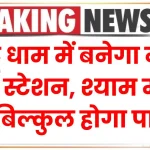
If you’re looking for a safe investment option in 2025, here’s some great news: you can now earn up to 9% interest on Fixed Deposits (FDs) in India. Yes, several small finance banks have recently revised their FD interest rates, offering attractive returns that even rival the stock market’s average long-term gains. Whether you’re a conservative investor or someone just starting out, this is an excellent time to lock in high returns with minimal risk.
Get 9% Interest on FD
| Feature | Details |
|---|---|
| Highest FD Interest Rate (General) | 9.00% (Unity, North East Small Finance Bank) |
| Highest FD Interest Rate (Seniors) | Up to 9.50% (Unity Small Finance Bank for 1001 days) |
| Top Banks Offering 9% | Unity SFB, North East SFB, Suryoday SFB, Utkarsh SFB, Jana SFB |
| Ideal Tenure for Best Rates | 1001 days, 18 months to 3 years |
| Deposit Safety | Up to ₹5 lakh insured by DICGC |
| TDS Threshold | ₹40,000/year (general), ₹50,000/year (seniors) before TDS applies |
With FD interest rates touching 9% for the first time in years, this is a golden opportunity for conservative investors, retirees, and even professionals looking to park surplus funds. While small finance banks may not be as well-known as bigger banks, they offer excellent rates under strict RBI supervision.
What Does It Mean to Get 9% Interest on FD?
A Fixed Deposit (FD) is a low-risk savings tool where you deposit a lump sum for a fixed tenure and earn interest on it. Unlike mutual funds or stocks, your returns are guaranteed. So when a bank offers a 9% interest rate, it means your money will grow steadily without market-linked risks.
For example, if you invest ₹1 lakh for 3 years at 9%, your maturity amount will be around ₹1.29 lakh, assuming annual compounding.
see also: There Are Not 1 But 5 Types of SIP – Know What is Special in Each SIP
Top Banks Offering 9% FD Interest Rates (April 2025)
Unity Small Finance Bank
- Interest Rate (General): 9.00% for 1001 days
- Senior Citizens: 9.50%
- Minimum Deposit: ₹1,000
North East Small Finance Bank
- Interest Rate: 9.00% for 18 months 1 day to 36 months
- Senior Citizens: 9.00% (same as general)
Suryoday Small Finance Bank
- Interest Rate: 8.60% for 5 years
- Senior Citizens: 9.10%
Utkarsh Small Finance Bank
- Interest Rate: 8.50% for 1500 days (around 4 years)
- Senior Citizens: 9.10%
Jana Small Finance Bank
- Interest Rate: 8.25% for 1 to 3 years
- Senior Citizens: 8.75%
Note: These are the highest available rates as of April 2025 and may vary based on deposit amount and tenure. Always check the bank’s official website or branch before investing.
Why Senior Citizens Get Higher FD Rates
Banks generally offer 0.25% to 0.75% extra interest to senior citizens (age 60+), which can significantly boost retirement savings. For instance, if a bank offers 9% to general citizens, seniors could get up to 9.5%.
Example:
If a 65-year-old invests ₹2 lakh for 1001 days at 9.5%, the maturity amount could be about ₹2.52 lakh, helping them beat inflation while keeping their capital safe.
Should You Invest in Small Finance Bank FDs?
Small Finance Banks (SFBs) are regulated by the Reserve Bank of India (RBI) and must follow strict compliance and capital norms. So yes, they are generally safe up to ₹5 lakh under the Deposit Insurance and Credit Guarantee Corporation (DICGC) cover.
However, as a best practice:
- Avoid putting all your savings in one bank.
- Stay within the insured limit of ₹5 lakh per bank, per depositor.
- Diversify across 2-3 SFBs if investing more.
Learn more about deposit safety on RBI DICGC Website.
How to Choose the Best FD Scheme for You
Here’s a step-by-step approach:
1. Decide Your Goal
Short-term parking? Retirement planning? Education?
2. Compare Interest Rates
Use bank comparison tools or visit individual bank websites.
3. Check the Tenure
Opt for 1001 days to 3 years to get the highest interest rates.
4. Senior Citizen Benefits
If you or a family member is eligible, use their name to maximize returns.
5. Review Tax Implications
If your FD interest exceeds ₹40,000 (₹50,000 for seniors), TDS will be deducted unless Form 15G/15H is submitted.
6. Evaluate Premature Withdrawal Clauses
Check if the bank allows early withdrawal and what penalty applies.
Tax on FD Interest Income
FD interest is fully taxable under “Income from Other Sources”. It will be added to your annual income and taxed as per your slab. Banks deduct TDS @ 10% if annual interest exceeds:
- ₹40,000 for general public
- ₹50,000 for senior citizens
You can avoid TDS by submitting Form 15G or 15H if your total income is below taxable limits.
Tip: If you fall in the lower tax bracket, split large FDs across family members to reduce tax liability.
Benefits of Investing in High-Interest FDs
- Guaranteed Returns
- Low Risk
- Higher than Savings Account & Normal FD Rates
- Ideal for Retirees and Risk-Averse Investors
- Inflation-Adjusting Returns for Seniors
see also: 7 Post Office Schemes That Will Promise You a Solid Profit
Interest on FD FAQs
Q1. Can I invest more than ₹5 lakh in a Small Finance Bank FD?
Yes, you can. But only ₹5 lakh is insured by DICGC per bank. To stay safe, split the amount across different banks.
Q2. How often is the interest paid?
It depends on your choice: monthly, quarterly, or at maturity (cumulative).
Q3. Are these interest rates fixed or floating?
They are fixed for the duration of the FD once booked.
Q4. Is online FD booking available for these banks?
Yes, most of them offer online FD booking through net banking or mobile apps.
Q5. Are there any risks in investing with SFBs?
They are regulated by RBI, but not as big as PSU or private banks. Stick to insured limits for safety.











